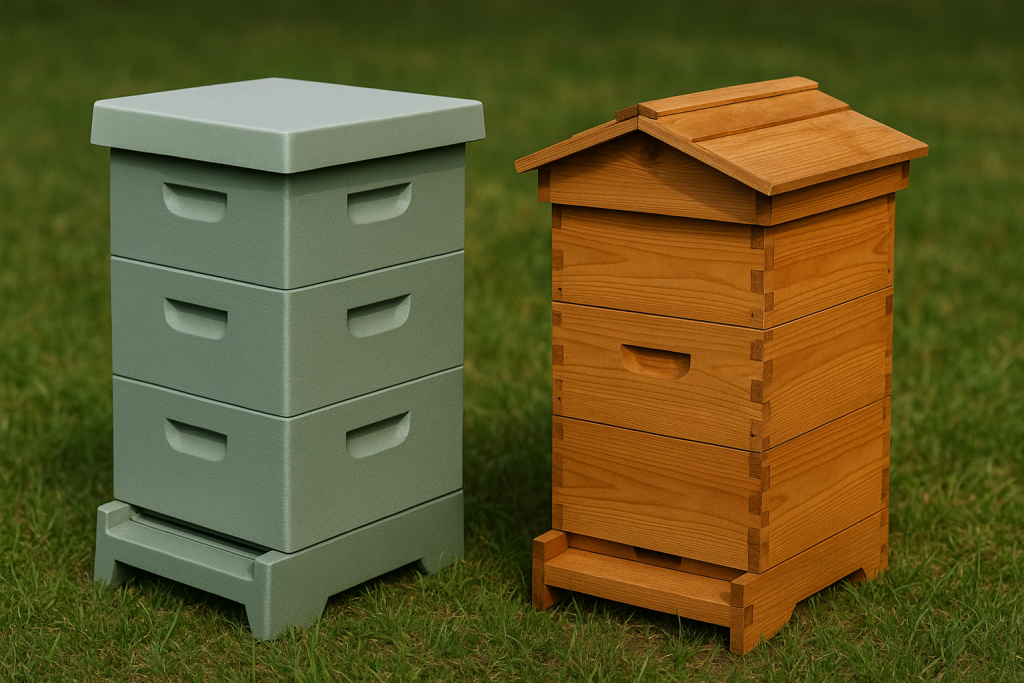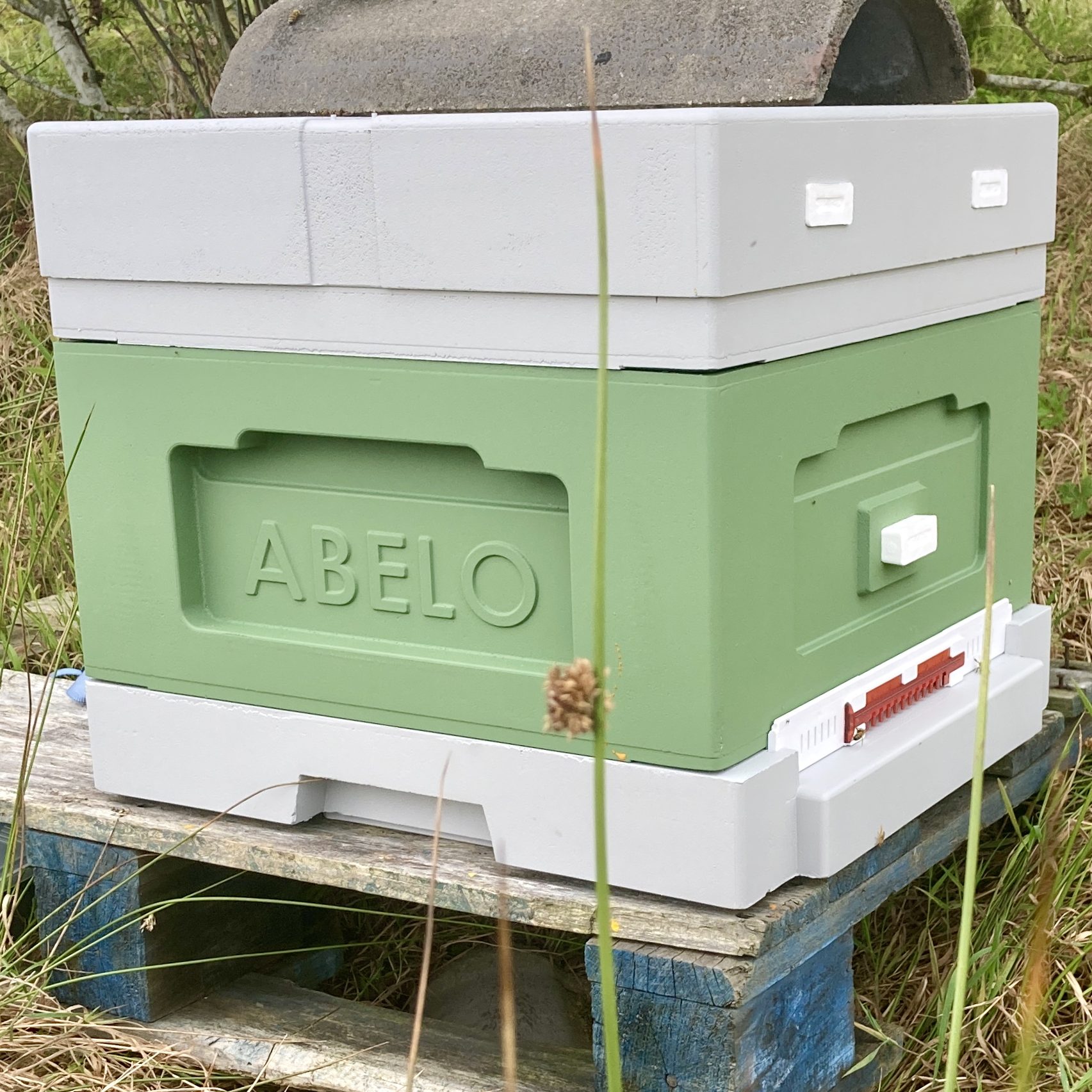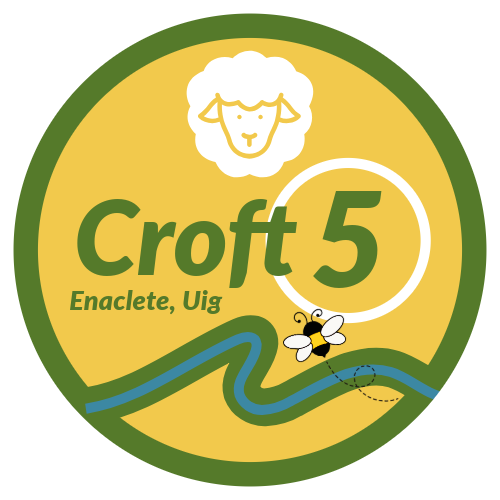
Winter is Coming
Ok, a bit dramatic as it is still only August. However the longest day has passed, the days are getting shorter, and someone forgot to tell summer that it’s still not finished its shift yet!
With beekeeping (like most farming activities) I need to consider my winter tasks in advance and make plans so that I can order any treatments or equipment that may be required before any rush or stock issues. Especially living on the Isle of Lewis, where some companies won’t post to, or if there is a shortage I can’t beg or borrow from a nearby beekeeper.
However the current weather has brought forward my planning for housing the bees over winter. I always knew it would be challenging in the Outer Hebrides, not because the temperatures are especially cold or extreme (actually they are relatively mild compared to the North East of England for example), but because of the wind and driving rain. I had a mind to shelter the beehive, moving it indoors almost, by building a ply house to sit around it. I had many sketches and ideas of the best way to protect the hive from a sudden drop in temperature caused by a severe north wind for example. But all of these require me to design, build, and trial a non-standard product.
I like a challenge and a bit of creativity, however there are cost and time implications to consider if I am to replicate this to other hives as my apiary expands. There is also a saying about “reinventing the wheel” and my research has found that plenty of beekeepers had tried every possible incarnation to produce their “perfect hive”. I couldn’t think of anything to add that hadn’t already been proven or dismissed before.
I discussed the issue with another beekeeper facing similar conditions to here but on the mainland, and they told me that they only use interlocking poly hives. I had considered them before purchasing my first cedar hive but decided to go with the more traditional wooden route, figuring if it has been ok for previous generations of bees it’ll be ok for the next. The choice of hives all got a bit overwhelming to be honest (sizes, styles, materials, accessories, colours, and more!) so I just went back to the start and picked a cedar national hive with the traditional “basic” set-up.
Cedar Beehives
Cedar has a sort of charm and nostalgia when it comes to weathering the outdoors, like oak does when it comes to framing a barn. Assembling the wooden hives using a hammer and nails really fitted with the ethos of Croft 5. The smell, the use of a sustainable and natural product, and in some way the feeling that if bees live in trees then I should try and replicate this for them is some small (but square) way. I also wondered if cedar would provide some anti-bacterial characteristics, or at least give the bees a surface for which they could coat with propolis? However my bees don’t seem to be doing this.
Having now observed the wooden hive for two months (including two summer storms that prevent ferry crossings ) I have realised the downfalls of wooden hives in the Outer Hebrides. The driving rain finds it’s way in no matter what, it’s always damp and there are already signs of mould appearing within the top of the hive. Obviously there are ways to mitigate this, as mentioned above, but all of them require more equipment in the form of insulated hive wraps, insulation under the roof, extra wind breaks, etc. I am planning to expand my beekeeping as a commercial operation and wanted a solution that was easily replicable, off the shelf, and suitable for siting the hives in less than perfect locations.
I have also found that the standard beginner hive as sold isn’t actually that good as it is, and requires further equipment or modifications. For example: feeders don’t fit under the lid without a spacer; the porter bee escapes in the crown board let bees through in both direction; the holes in the crown boards need covering with something; you can’t remove or change the entrance reducer without lifting the bottom box; there’s no landing board (whilst not essential, it is a nice feature to have). The list goes on, and I am sure many of these problems are also found on some of the poly hives as well.
Poly Beehives
So before winter arrives I have decided to make the leap to poly hives. I feel like putting a plastic box in the middle of a wildflower meadow doesn’t quite sit right, like an old caravan left abandoned in the middle of the peats. But the bees don’t care about looks, they care about survival. That survival is dependant on warmth, dryness, and temperature stability.
Poly hives provide superior insulation to wood. This means stable temperatures in summer and winter, with less fluctuations throughout the day and night. As temperatures fluctuate bees compensate, but this requires energy which requires food which requires more energy…the cycle goes on. If they expend less effort maintaining a changing hive they can focus that energy of maintaining the colony over winter. And less energy expenditure requires less food, which means that their stores should last longer.
The design of hive I have chosen has interlocking sections with rebates that should prevent water or wind driving in. I have a smaller poly nuc (6 frame hive) that has been sat out for a week (including through another named storm!)and not a drop of water has gotten into that hive. The lid is not extended like the cedar hive, but does have an internal rebate, proving to me that this design does work. It will also eliminate the risk of sections slipping during transportation, unexpected interactions from inquisitive livestock, and the gusting winds.

As you can see, the entrance reducer can be changed or shut off easily and there is a mouse guard with it. Then there are the other features: the landing board; a crown board with plugs for holes; a feeder that fits in a rebate under the lid; handles on the floor making it easier to move (didn’t even know I needed those, but a useful feature).
There are many variables in beekeeping, and no one right way. We have a choice to continually learn and adapt or stick with tradition. This change is a shift for me and for the bees, and with hindsight one I should have started with. Part of me still longs for the charm of sustainable cedar and I quite enjoyed building the hives and choosing the paint colours. I shall re-introduce those wooden hives in the spring for making splits and nucleus building.
But out here, practicality and survivability wins more often than not! Poly feels like giving the bees a better shot through our long, wet winters (or summers) and in the end, that’s the whole point.
The honey will still carry that same unique flavour of the island, but the bees will have an easier and more productive time producing it.
If you enjoy reading about my beekeeping adventures in the Outer Hebrides then follow them by subscribing below, or have a read of my other beekeeping posts.

Leave a Reply